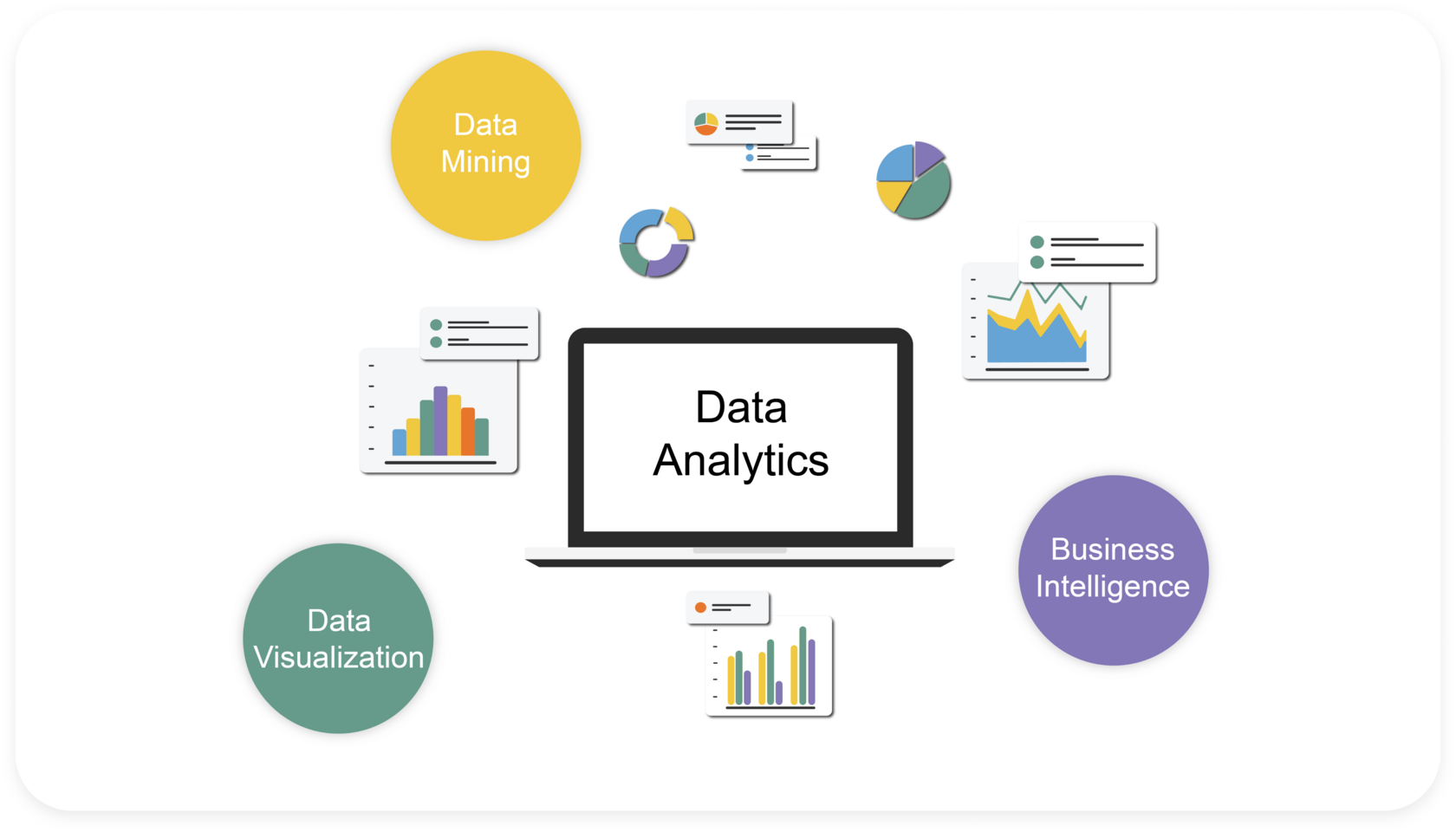Discover Hidden Opportunities with Modern Analytics Techniques
Increase Efficiency and Profitability Through Information Analytics
In today's data-driven landscape, services are increasingly recognizing the critical role of information analytics in enhancing operational performance and productivity. By methodically analyzing information, companies can discover critical insights that inform strategic decisions, improve processes, and tailor client experiences.
Understanding Information Analytics
In today's data-driven landscape, recognizing information analytics is necessary for organizations aiming to enhance operational performance and drive profitability. Data analytics includes the systematic computational evaluation of data sets to discover patterns, relationships, and insights that inform decision-making. By using various strategies, such as analytical evaluation, machine understanding, and predictive modeling, companies can change raw information right into actionable intelligence.
The process typically begins with data collection, where relevant info is gathered from multiple resources, consisting of transactional databases, customer interactions, and market trends. This data is after that cleansed and arranged to guarantee accuracy and consistency. As soon as the information is prepared, analytical tools and software program are made use of to picture the info and explore, enabling stakeholders to determine trends and anomalies.
Eventually, recognizing data analytics equips organizations to make enlightened decisions based upon empirical evidence as opposed to instinct. It helps with targeted approaches that can enhance source allotment, boost customer fulfillment, and improve total efficiency. As organizations increasingly identify the worth of data-driven understandings, a strong understanding of information analytics becomes a vital proficiency for leaders and teams alike, placing them for continual success in an affordable atmosphere.

Secret Benefits for Businesses
Services that utilize data analytics can open a wide variety of benefits that considerably enhance their operations and success. One of the primary benefits is improved decision-making. Information analytics offers workable understandings derived from real-time data, allowing businesses to make enlightened selections that align with market needs and customer choices.

Furthermore, information analytics promotes enhanced consumer experiences. By comprehending customer behaviors and preferences, services can customize their offerings, bring about raised satisfaction and loyalty. This customized strategy commonly results in higher conversion prices and repeat organization.
Additionally, data analytics allows services to determine emerging possibilities and trends. By staying ahead of the contour, organizations can exploit on brand-new markets and advancements before their competitors.
Carrying Out Data-Driven Techniques
Effective application of data-driven methods calls for an extensive understanding of both organizational goals and available data resources. Organizations must initially define their purposes clearly, guaranteeing alignment in between data initiatives and strategic aims. This clarity makes it possible for teams to concentrate on pertinent metrics and insights that drive decision-making.
Premium data is essential for precise evaluation, as poor information can lead to misdirected techniques and lost sources - Analytics. Organizations needs to establish processes for data collection, cleansing, and monitoring to preserve data stability.
Furthermore, promoting a data-driven culture is essential. Staff members in any way levels should be motivated to take advantage of data in their day-to-day operations. Educating programs and workshops can enhance information proficiency, encouraging personnel to make enlightened choices based upon logical insights.
Tools and Technologies Overview
A durable suite of tools and technologies is necessary for organizations intending to harness the complete potential of data analytics. These tools promote the collection, processing, and visualization of data, enabling organizations to obtain workable insights.
At the fundamental degree, data administration platforms such as SQL data sources and NoSQL systems offer efficient data storage space and access abilities. For data processing and analysis, programming languages like Python and R, together with structures such as Apache Glow, enable complex calculations and artificial intelligence applications.
Visualization tools, including Tableau and Power BI, transform raw information into user-friendly graphical layouts, making understandings available to stakeholders whatsoever levels. Furthermore, cloud-based systems like Google Cloud and AWS provide scalable storage and handling remedies, fitting the growing volumes of data organizations encounter.
For sophisticated analytics, predictive modeling and AI-driven options are significantly embraced, enabling business to forecast patterns and improve decision-making procedures. Integrating these tools into existing process is paramount; organizations that try this web-site successfully leverage this modern technology can significantly improve operational effectiveness and drive productivity. Hence, purchasing the right tools and innovations is a critical important for any kind of data-driven organization.
Study of Success
Leveraging information analytics has led various companies to achieve amazing improvements in performance and productivity. One remarkable instance is a big retail chain that applied predictive analytics to optimize inventory administration. By examining historic sales information and consumer patterns, the company reduced excess inventory by 30%, causing significant price financial savings and enhanced capital.
An additional instance can be located in the manufacturing market, where a leading vehicle producer made use of information analytics to enhance its manufacturing processes. By monitoring device performance in real-time, the company identified inefficiencies and bottlenecks, leading to a 20% rise in total equipment efficiency (OEE) This not only improved production prices yet also reduced downtime and upkeep prices.

These study show exactly how data analytics can drive strategic decision-making, enhance procedures, More about the author and ultimately boost both effectiveness see this page and productivity throughout different markets.
Final Thought
In final thought, the integration of information analytics into business procedures offers significant possibilities for enhancing efficiency and success. By methodically assessing information, organizations can identify inadequacies, enhance client experiences, and make notified choices.
In today's data-driven landscape, understanding data analytics is crucial for companies intending to improve operational performance and drive profitability. Information analytics includes the systematic computational evaluation of data collections to discover patterns, correlations, and insights that notify decision-making. Information analytics offers workable understandings derived from real-time data, allowing companies to make educated choices that line up with market demands and customer choices.
Top quality data is vital for accurate analysis, as inadequate data can lead to misdirected techniques and squandered resources. Organizations should develop procedures for information collection, cleaning, and monitoring to maintain data stability.